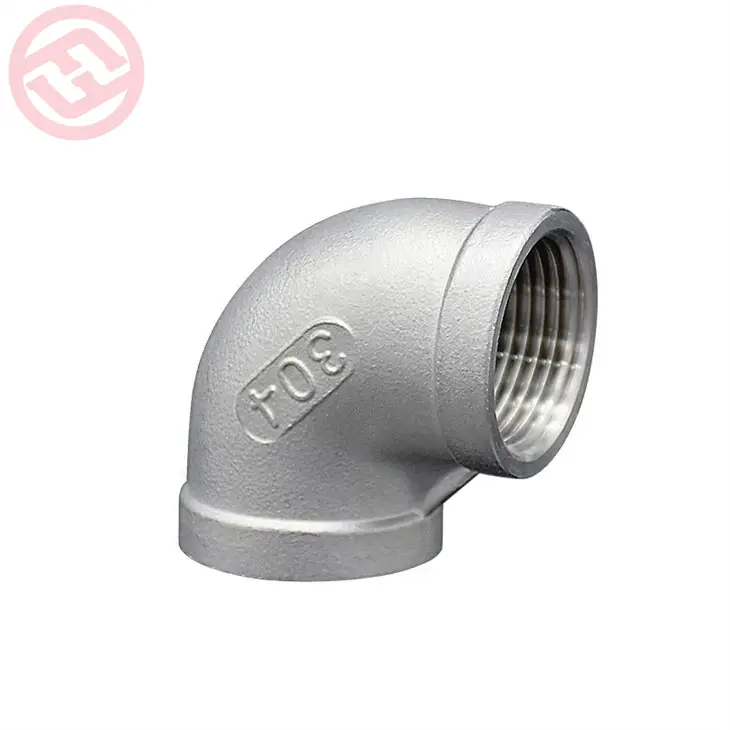Malleable iron pipe fittings are widely used in plumbing and HVAC systems to connect pipes and control fluid flow. They come in a variety of shapes and sizes to accommodate different pipe types and applications. Two of the most common standards for malleable fittings are the British Standard (BS) and American Standard. Understanding the key differences between BS and American malleable fittings can help you select the right components for your system.

What is Malleable Iron?
Malleable iron starts as cast iron that is heat-treated to increase its ductility and strength. The malleablization process involves heating white cast iron to over 1,650°F and then rapidly cooling it. This changes the molecular structure from carbide cementite to pure iron ferrite, resulting in a more malleable material that can be shaped and formed.
Compared to gray cast iron, malleable iron has enhanced mechanical properties like impact resistance, ductility, and reliability. It also has better machinability than cast iron. All of this makes it well-suited for pipe fittings that need to withstand pressure fluctuations, vibration, and temperature extremes.
BS Malleable Iron Fittings
BS fittings follow British manufacturing standards set by BSI, the national standards body of the UK. They are commonly used for heating and gas systems in Britain, Ireland, and former British territories. Some key features of BS malleable fittings include:
- Threaded connections that follow British Standard Pipe (BSP) parallel threads. The tapered thread provides tight sealing and increased strength.
- Dimensions, wall thicknesses, and thread specifications adhere to British standards. Most have thicker walls than American fittings.
- Material grade is EN 1562 EN-GJS-400-15, indicating high ductility and strength malleable iron that meets European standards.
- Marked with identifiers like “BS” or “BSP.” Higher grade BS fittings are stamped “HV” for high value or “HM” for heavy malleable.
- Pressure ratings from 64 bar for general purpose fittings up to 255 bar for heavy malleable ranges. Standard working temp is -20°C to 120°C.
- Common shapes include elbows, tees, unions, reducers, caps, crosses, couplings, and adapters.
- Sizes range from 1/8″ to 8″ diameter, but commonly stocked are 1⁄2″ to 2″ sizes.
BS fittings must pass rigorous testing to verify they meet specifications for things like wall thickness, leak tightness, flaw tolerance, and mehr strength. Their durability makes them well-suited for hot water heating systems and gas supply lines.
American Standard Malleable Fittings
American fittings meet ASME B16.3 standards for threaded malleable iron pipe unions and fittings up to 6 inches. They have several differences from BS standard fittings:
- Threaded ends follow National Pipe Tapered (NPT) threads per ASME B1.20.1. This provides a better seal than parallel threads but makes them harder to assemble.
- Dimensions and wall thicknesses follow ASME standards, which are generally thinner than BS fittings. They have more generous clearances between threads.
- Usually unmarked or stamped with “NPT” for National Pipe Thread. There are no specific material grade stamps.
- Typical pressure rating is 300 psi WOG (water, oil, gas) for malleable fittings up to 2″, dropping to 150 psi for sizes over 2″.
- Common shapes aligned with ASME including elbows, couplings, unions, bushings, caps, plugs. Sizes from 1/8″ to 6″.
- Made from ASTM A197 malleable iron or ASTM A47 common grades. The iron has less ductility but machinability similar to BS material.
While they meet different standards, American and BS malleable pipe fittings provide similar performance for most low and moderate pressure applications. Selecting one over the other often comes down to which local standard is most commonly used. British fittings are preferable for matching BSP threads while American standard fittings pair with NPT threaded pipe.
Choosing The Right Malleable Fittings
No matter which standard you choose, malleable iron has distinct advantages over other fitting materials like plastic or cast iron. The key is picking the right type and size fitting for your specific application. Here are some tips:
- Match the fitting grade, wall thickness and pressure rating to the system media, temperature, and pressure. Thicker, heavy duty fittings are best for high pressure steam lines for example.
- Ensure thread types and sizes are compatible with connecting pipe. Mixing BSP and NPT threads will lead to leakage.
- Pay attention to flow direction. Fittings like elbows and tees are often designed for specific directions of flow and pressure.
- Use fittings rated for the service media including water, gas, diesel, oils, etc.
- Determine the required size and number of fittings from pipe schematics and measurements. Allow for pressure losses from added fittings.
- Buy fittings with certification to BS, ASME or ASTM for proven material strength and performance.
Malleable iron has been used reliably for over a century thanks to its versatility, strength, and ease of machining. Being familiar with the differences between British and American pipe fitting standards will ensure you get the right components every time.
